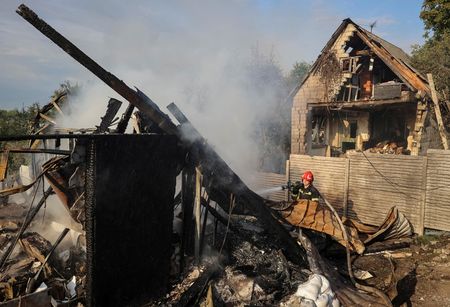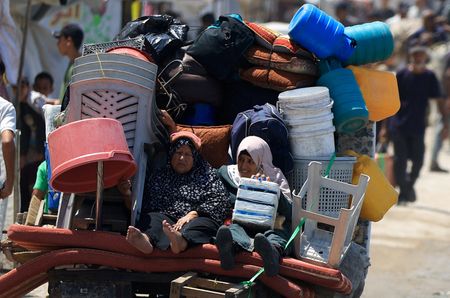VILNIUS (Reuters) -NATO member Lithuania has declared a 90-kilometre (56 miles) long no-fly zone near its capital along the country’s border with Belarus, in response to drones entering from there.
“This was done with regard to the security situation and the threats to society, including risks to civil aviation due to airspace violations by unpiloted aircraft,” a Defence Ministry spokesperson said in an emailed statement on Thursday.
The no-fly zone will allow Lithuania’s armed forces to react to airspace violations, said the statement.
Lithuania shares a 679-kilometre (422 miles) border with Belarus, a close ally of Russia. The capital Vilnius lies roughly 30 kilometres from the border.
The no-fly zone was established on August 14 and extends from the ground up to 12,000 feet (3.7 kilometres), according to the air navigation authority notice. Aircraft in that zone face the “risk of interception and/or engagement in the event of penetration”.
Lithuania has asked NATO for more air defences after two unmanned military aircraft identified as Gerbera drones, which Russia builds and uses against Ukraine, flew into Lithuania from Belarus in July and crashed.
In the most recent incident, on July 28, a drone armed with 2 kg of explosives flew over Vilnius before crashing in a military training area used by the German army about 100 kilometres from the border.
Authorities said the drone was likely directed by Russia at Ukraine but got disoriented by Ukraine’s defences.
Another Gerbera drone entered Lithuania from Belarus on July 10, leading to Gintautas Paluckas, then the prime minister, and Speaker of Parliament Saulius Skvernelis being briefly taken to bomb shelters before authorities determined the drone was not dangerous.
Polish officials reported on Wednesday that a Russian drone had crashed in a field in eastern Poland, an incident the country’s defence minister described as a provocation.
Estonia has established a no-fly zone along all of its Russian border from July 31 to August 25, citing “unmanned aircraft activity”, according to the Estonian air navigation authority’s webpage.
(Reporting by Andrius Sytas; Editing by Stine Jacobsen, Terje Solsvik and Hugh Lawson)









